Knowledge base > General guides
Guitar effects software
Our comprehensive catalog of plugins offers a total of over 70 high-quality guitar effects
Neural DSP guitar plugins come bundled with a set of diverse high-quality guitar effects
Guitar effects have been a fundamental part of music for decades. They add character, depth, and dimension to a guitar's sound, transforming it from a straightforward tone to a sonic landscape.
With the advent of technology, guitarists no longer have to rely solely on physical pedals to achieve their desired sound. Instead, plugins have become increasingly popular, offering a wide range of high-quality effects that can be applied to your guitar signal with ease.
All Neural DSP guitar plugins come bundled with a set of diverse high-quality guitar effects, meticulously designed to compliment the amps the plugins are simulating, offering endless possibilities for shaping your tone.
Our comprehensive catalog of plugins offers a total of over 70 high-quality guitar effects. These range from classic modulation effects such as choruses and flangers to more distinctive and innovative ones like the Overlord Synth found in Archetype: Rabea, the Multivoicer in Archetype: Tim Henson, and the Wow pitch shifter in Archetype: Gojira X.
In this article, we will introduce you to the world of guitar effects and showcase the vast array of effects in Neural DSP guitar plugins. Whether you're a seasoned guitarist or just starting out, we invite you to try out these plugins and discover the countless possibilities they offer.
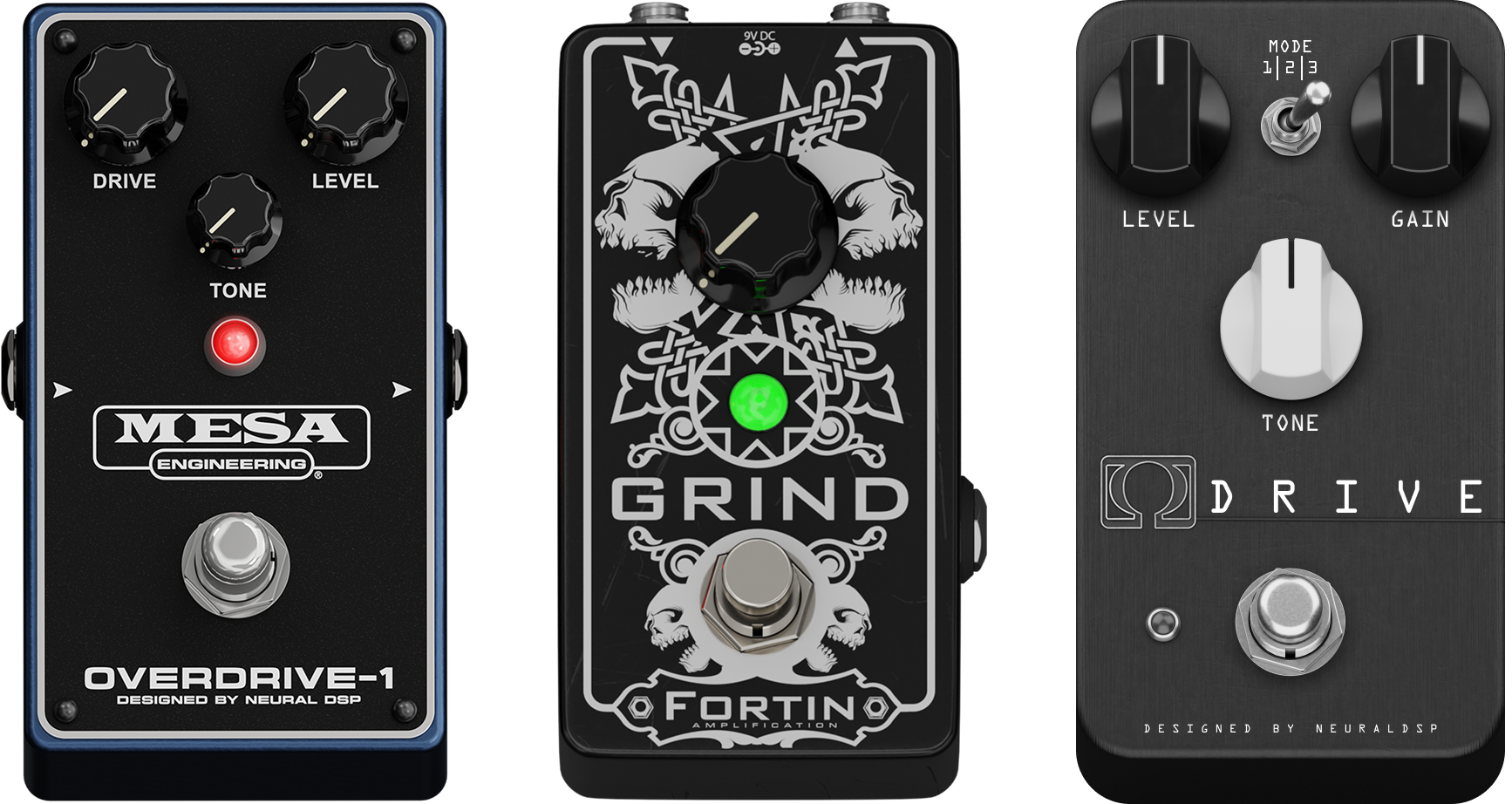
1. Gain / Dynamics
Gain and dynamics effects alter the volume and tone of the guitar signal, adding a layer of intensity and character to the sound. These effects manipulate the amplitude of the guitar signal, causing it to sound louder or distorted, creating the classic "crunch" and "drive" tones associated with rock and metal genres.
Overdrive
Overdrive is a type of gain effect that produces a warm, natural-sounding distortion by overdriving the amplifier's tubes. It's a popular effect among guitarists and is often used to achieve the classic "crunch" sound associated with rock and blues music. In metal music, overdrive can be used to add aggression and bite to the guitar tone, making it sound heavier and more powerful. Overdrives are also used to tighten up the low end and add clarity to the guitar tone.
Typically, overdrive pedals have a lower gain level than distortion pedals, producing a mild to moderate amount of distortion. This makes overdrive a versatile effect that can be used to add sustain, warmth, and depth to a guitar tone, making it sound fuller.
Related articles:
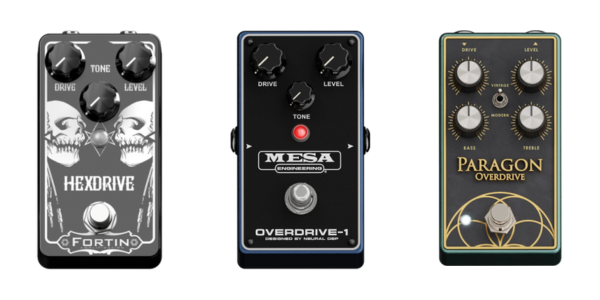
Overdrive pedals in Neural DSP plugins
Try all of these pedals with a 14-day free trial of any plugin.

Morgan Amps Suite: OD1
Try it in Morgan Amps Suite

Morgan Amps Suite: OD2
Try it in Morgan Amps Suite
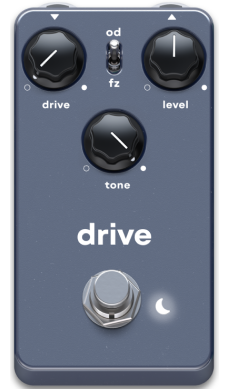
Archetype: Plini X: Drive
Try it in Archetype: Plini X

Archetype: Mateus Asato: OD-1
Try it in Archetype: Mateus Asato

Archetype: Mateus Asato: OD-2
Try it in Archetype: Mateus Asato

Mesa Boogie Mark IIC+ Suite: OD-1
Try it in Mesa Boogie Mark IIC+ Suite
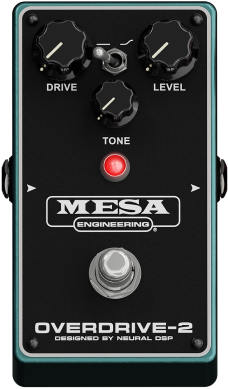
Mesa Boogie Mark IIC+ Suite: OD-2
Try it in Mesa Boogie Mark IIC+ Suite

Paragon Overdrive
Try it in Archetype: Rabea
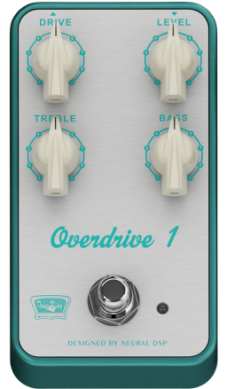
Tone King Imperial MKII: OD-1
Try it in Tone King Imperial MKII
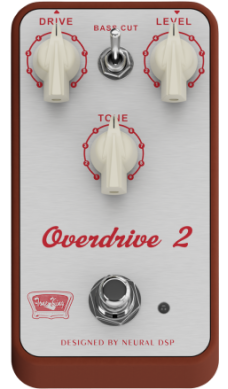
Tone King Imperial MKII: OD-2
Try it in Tone King Imperial MKII
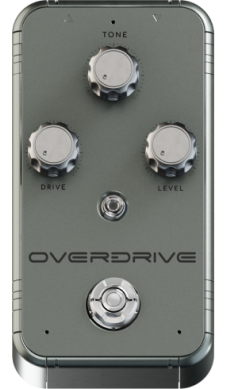
Archetype: Petrucci: OD
Try it in Archetype: Petrucci
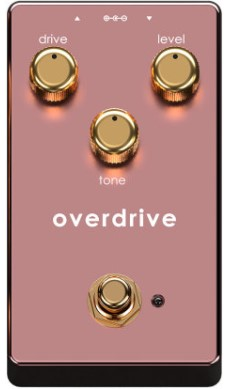
Archetype: Tim Henson: OD
Try it in Archetype: Tim Henson

Soldano SLO-100: OD-1
Try it in Soldano SLO-100

Soldano SLO-100: OD-2
Try it in Soldano SLO-100

Archetype: Gojira X: OD
Try it in Archetype: Gojira X

The Big Rig Overdrive
Try it in Archetype: Cory Wong

Archetype: Nolly: OD-1
Try it in Archetype: Nolly
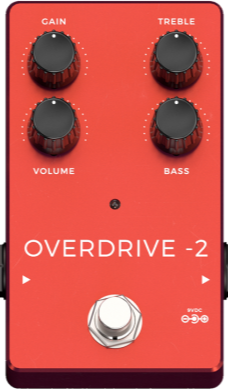
Archetype: Nolly: OD-2
Try it in Archetype: Nolly

Hexdrive
Try it in Fortin Cali Suite, Fortin NTS Suite & Fortin Nameless Suite
Distortion
Distortion pedals produce a highly distorted sound by clipping the audio signal. They are often used in heavy metal and hard rock to create a thick, aggressive tone. Distortion pedals are different from overdrive pedals in that they produce a higher amount of gain and a more intense distortion, often resulting in a sound that is harsher and more extreme.
Distortion pedals can be used to create a range of sounds, from mild overdrive to full-on heavy metal distortion. Some distortion pedals have a more compressed sound that can increase sustain, while others have a more open, dynamic sound that allows for greater note definition and clarity.
Related articles:

Distortion pedals in Neural DSP plugins
Try all of these pedals with a 14-day free trial of any plugin.

DRT
Try it in Archetype: Gojira X
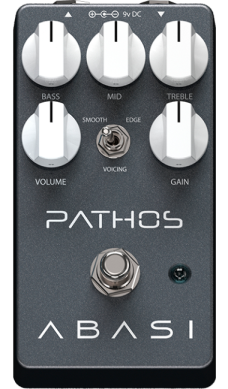
Pathos
Try it in Archetype: Abasi

Grind
Try it in Fortin Cali Suite, Fortin NTS Suite & Fortin Nameless Suite
Fuzz
A fuzz pedal creates a distortion effect that produces a characteristic fuzzy or buzzy sound. The fuzz sound is achieved by clipping the guitar signal. This produces harmonic overtones and creates a distinctive sound that can range from a mild buzz to a heavily distorted and saturated tone.
Fuzz pedals were popularized in the 1960s, particularly in the context of psychedelic rock, and have remained a staple effect in many genres of music. In music styles such as alternative rock and heavy metal, fuzz pedals are used to create unique and experimental guitar sounds.

Fuzz pedals in Neural DSP plugins
All of our plugins have a 14-day free trial.

Archetype: Plini X: Drive
Try it in Archetype: Plini X

Colossus Fuzz
Try it in Archetype: Rabea
Booster
Booster pedals are a type of effect pedal that increase the volume or gain of the guitar signal, providing a clean or slightly distorted boost to the overall sound. Booster pedals are used to push the amplifier or entire sound chain, resulting in a more dynamic and powerful sound.
There are two main types of booster pedals: clean boosters and dirty boosters. Clean boosters are designed to provide a clean volume boost without adding any color or distortion to the sound. They can be used to increase the volume for solos or to drive the amp harder for more breakup. Dirty boosters, on the other hand, are designed to add some amount of gain or distortion to the signal. They can be used to push the amplifier or other pedals into overdrive, producing a grittier or more saturated sound.
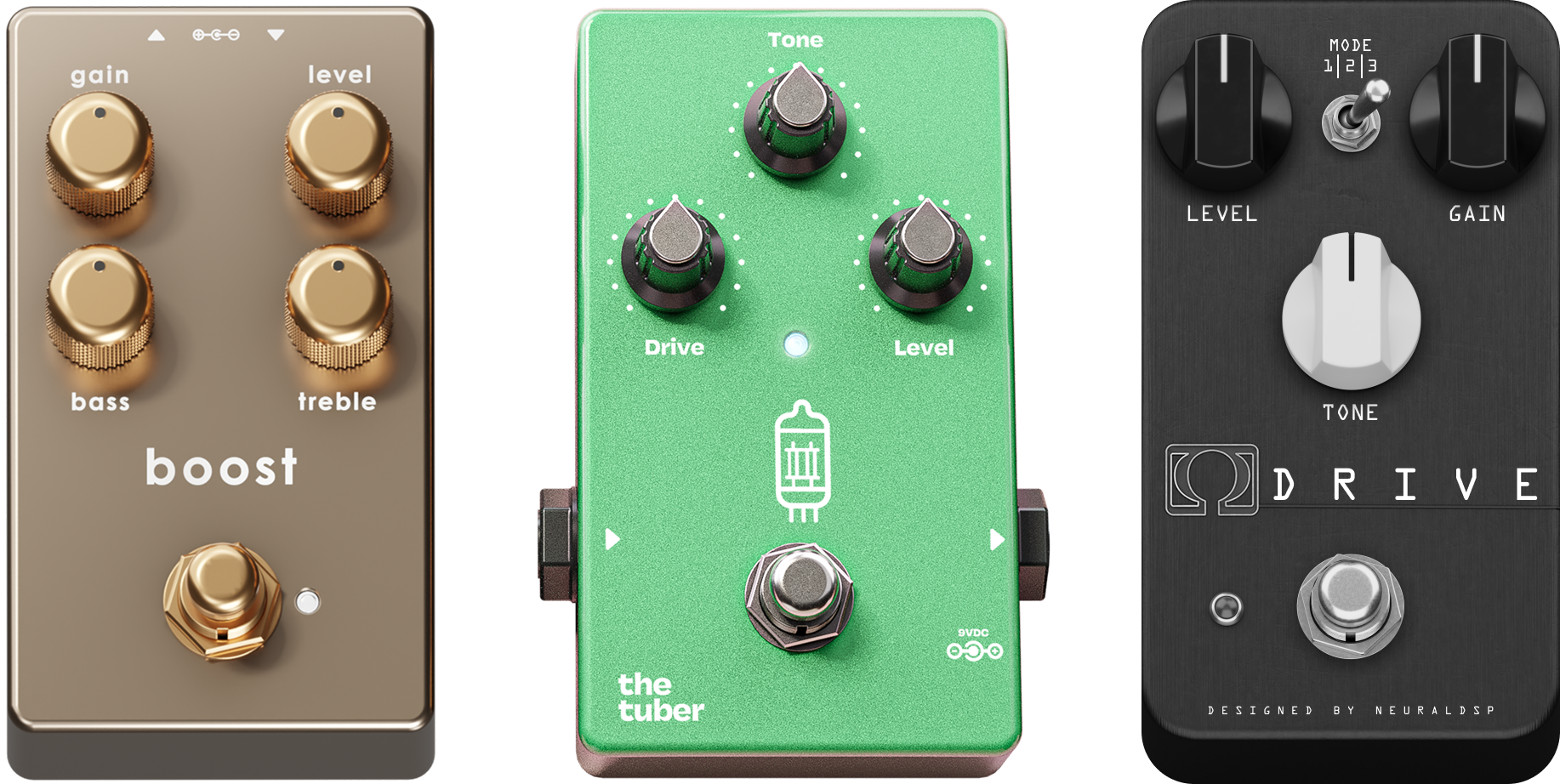
Booster pedals in Neural DSP plugins
Try all of these pedals with a 14-day free trial of any plugin.

Boost
Try it in Archetype: Tim Henson

The Tuber
Try it in Archetype: Cory Wong
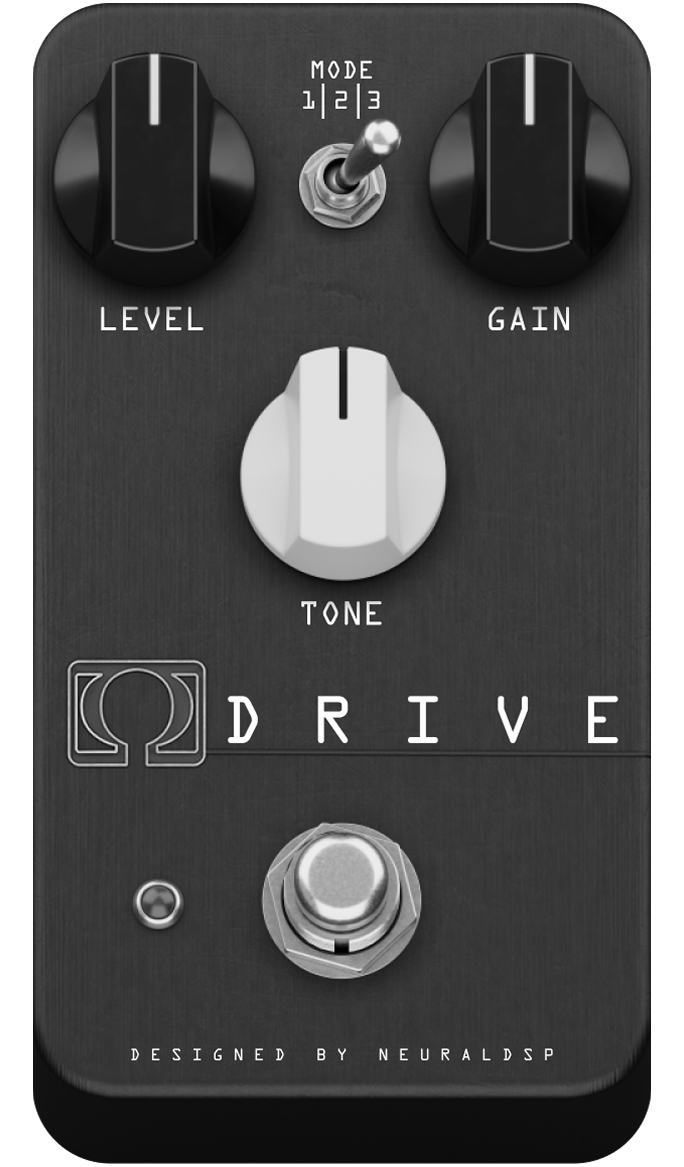
Drive
Try it in Omega Ampworks Granophyre
Compressor
Compressor pedals help to even out the levels of your guitar signal. They work by reducing the dynamic range of your guitar's signal, meaning that the loudest parts of the signal are reduced while the quieter parts are boosted. In other words, if a string is struck with a lot of force, a compressor will reduce the volume. If something is played very quietly, a compressor will boost the output making it more audible. This results in a more consistent overall signal level, making it easier to achieve a smooth and balanced guitar tone.
By reducing the dynamic range of the guitar signal, compressors can make the guitar's attack sound more prominent, adding depth and character to the tone. This is often used to allow the guitar to cut through a dense mix or to emphasize the picking technique of a player in genres like funk or metal.
Compressors can also add sustain to the sound of the guitar, giving notes more time to ring out before naturally decaying.
Related articles:

Compressor pedals in Neural DSP plugins
Try all of these pedals with a 14-day free trial of any plugin.

Morgan Amps Suite: CMP
Try it in Morgan Amps Suite

Archetype: Plini X: Compressor
Try it in Archetype: Plini X

Mesa Boogie Mark IIC+ Suite: Compressor
Try it in Mesa Boogie Mark IIC+ Suite

Twin Blade Dual Compressor
Try it in Archetype: Rabea

Tone King Imperial MKII: Compressor
Try it in Tone King Imperial MKII

Archetype: Petrucci: Compressor
Try it in Archetype: Petrucci
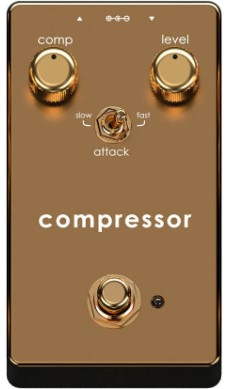
Archetype: Tim Henson: Compressor
Try it in Archetype: Tim Henson

Soldano SLO-100: Compressor
Try it in Soldano SLO-100

The 4th Position Compressor
Try it in Archetype: Cory Wong

Logos
Try it in Archetype: Abasi

Archetype: Nolly: Compressor
Try it in Archetype: Nolly
Noise gate
A noise gate is a tool that eliminates unwanted noise and hum from your signal. Essentially, a noise gate pedal acts like a gate that only allows the signal to pass through when it's above a certain threshold. This means that any noise or hum that falls below that level will be effectively silenced, making the signal cleaner and more transparent. This is particularly useful for music that uses high-gain tones where unwanted noise and hum can be an issue.
It is worth noting that a noise gate can affect sustain by cutting off the decay of notes that fall below its threshold. This means that if the threshold is set too high, sustained notes may be prematurely cut off, resulting in shorter sustain. The threshold should be set to a level that cuts out the noise you want to eliminate, but doesn’t affect the tone or feel of your playing.
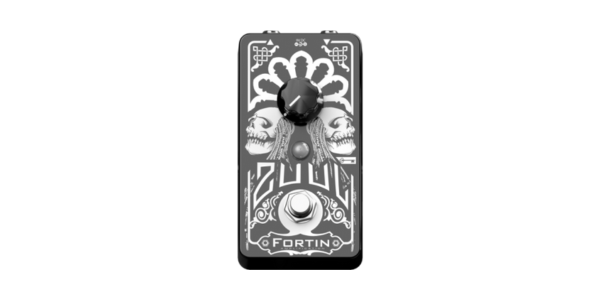
Noise gate pedals in Neural DSP plugins
A noise gate can be found in every Neural DSP plugin in the controls at the top of the user interface. Additionally, the Fortin ZUUL pedal has been modeled and is available in the Fortin Nameless Suite, Fortin NTS Suite, and Fortin Cali Suite.
All Neural DSP plugins have a free 14-day trial.
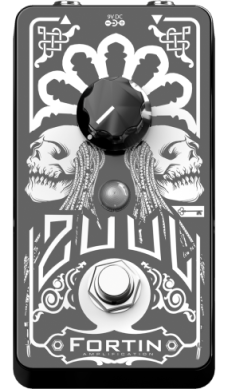
Fortin ZUUL
Try it in Fortin Cali Suite, Fortin NTS Suite & Fortin Nameless Suite

2. Modulation
Modulation effects alter the tone of the guitar signal by adding movement and complexity to the original sound. These effects can create a wide range of sounds, from subtle and tasteful to wild and chaotic. The term "modulation" refers to the way in which the effect alters the pitch or frequency of the guitar signal, creating a swirling, shifting sound. Modulation effects are typically used to add a sense of movement, create space, or to make the sound texture more interesting.
Chorus
Chorus pedals are one of the most commonly used modulation effects. They create a rich, thick sound by duplicating the guitar signal and adding a slight delay and modulation to the duplicated signal. This adds depth and richness to the tone by making it sound like it’s being played by multiple guitars at once.

Chorus pedals in Neural DSP plugins
Try all of these pedals with a 14-day free trial of any plugin.

Archetype: Plini X: Chorus
Try it in Archetype: Plini X

Mod
Try it in Archetype: Mateus Asato
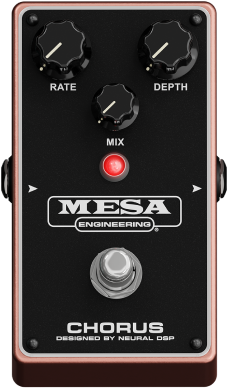
Mesa Boogie Mark IIC+ Suite: Chorus
Try it in Mesa Boogie Mark IIC+ Suite

Tone King Imperial MKII: Chorus
Try it in Tone King Imperial MKII

Archetype: Petrucci: Chorus
Try it in Archetype: Petrucci

Archetype: Petrucci: Stereo Chorus
Try it in Archetype: Petrucci
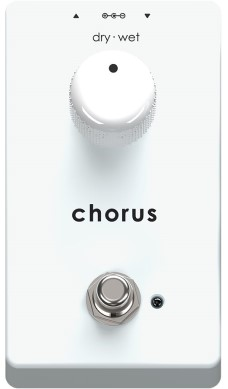
Archetype: Tim Henson: Stereo Chorus
Try it in Archetype: Tim Henson

Soldano SLO-100: Chorus
Try it in Soldano SLO-100

CHR
Try it in Archetype: Gojira X
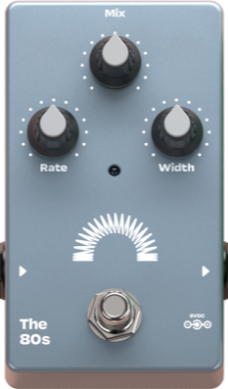
The 80s
Try it in Archetype: Cory Wong
Phaser
Phaser pedals work by splitting the guitar signal into two separate paths, altering the phase of one of the signals and then recombining them. The result is a sweeping sound that moves up and down in frequency, creating a unique and dynamic effect.

Phaser pedals in Neural DSP plugins
Try all of these pedals with a 14-day free trial of any plugin.
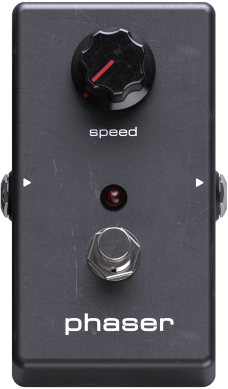
Archetype: Tom Morello: Phaser
Try it in Archetype: Tom Morello

Archetype: Petrucci: Phaser
Try it in Archetype: Petrucci
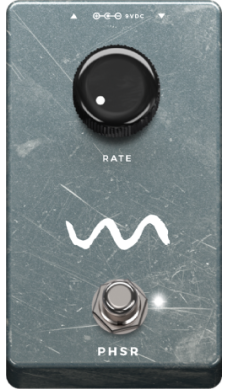
PHSR
Try it in Archetype: Gojira X
Flanger
Flanger pedals create a jet-like sound by duplicating the guitar signal and altering the phase of one of the signals. This causes the two signals to sweep in and out of phase with each other, creating a sound that is both wobbly and metallic.

Flanger pedals in Neural DSP plugins
All of our plugins have a 14-day free trial.
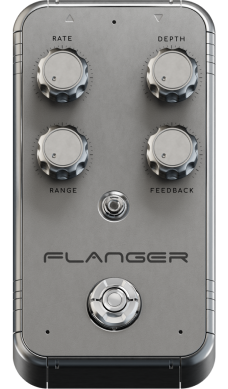
Archetype: Petrucci: Flanger
Try it in Archetype: Petrucci
Tremolo
Tremolo is a modulation effect that modulates the volume of your signal rapidly and repeatedly, kind of like turning the volume knob back and forth. This creates a pulsating rhythmic effect. The speed and depth of these volume changes can be adjusted, which affects how noticeable the effect is.
Some amps, like the Tone King Imperial MKII for example, have the tremolo effect built into them.

Tremolo pedals in Neural DSP plugins
Try all of these pedals with a 14-day free trial of any plugin.
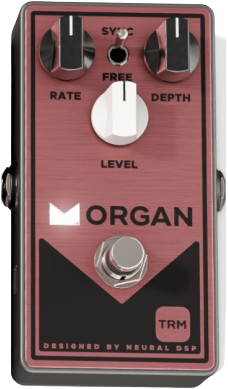
Morgan Amps Suite: TRM
Try it in Morgan Amps Suite
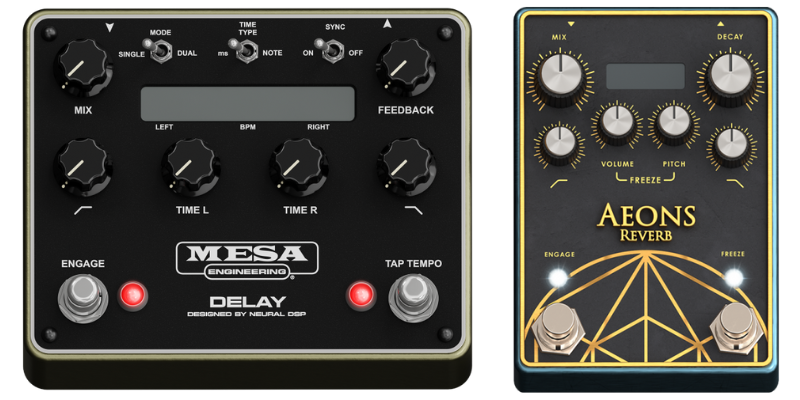
3. Time-based
Time-based effects manipulate your sound by delaying, repeating, or echoing it. They allow you to create intricate and multi-layered tones, adding texture and atmosphere to your performance. Time-based effects are often used in lead sounds to give each note more definition and impact, as well as texture and richness to the tone.
When combined with modulation effects, time-based effects can produce a variety of sounds, from subtle ambience to more psychedelic, out-of-this-world soundscapes.
Delay
Delay pedals create an echo or repeat of your guitar's sound by recording and playing back the original signal with a slight time delay. By adjusting the timing and intensity of the delay, you can create a range of different sounds and effects, from short, slapback-style repeats to long, sustained echoes.
Related articles:

Delay pedals in Neural DSP plugins
Try all of these pedals with a 14-day free trial of any plugin.

Morgan Amps Suite: DLY
Try it in Morgan Amps Suite
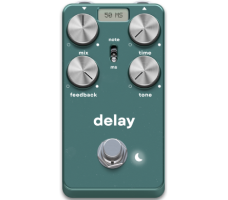
Archetype: Plini X: Delay 1
Try it in Archetype: Plini X

Archetype: Plini X: Delay 2
Try it in Archetype: Plini X

Archetype: Mateus Asato: Echo
Try it in Archetype: Mateus Asato
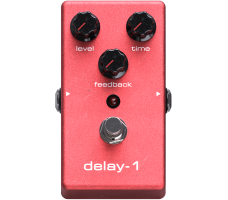
Archetype: Tom Morello: Delay-1
Try it in Archetype: Tom Morello

Archetype: Tom Morello: Delay-2
Try it in Archetype: Tom Morello

Mesa Boogie Mark IIC+ Suite: Delay
Try it in Mesa Boogie Mark IIC+ Suite
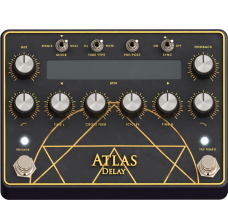
Atlas Delay
Try it in Archetype: Rabea
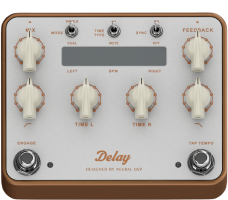
Tone King Imperial MKII: Delay
Try it in Tone King Imperial MKII

Archetype: Petrucci: Stereo Delay
Try it in Archetype: Petrucci

Archetype: Tim Henson: Delay
Try it in Archetype: Tim Henson

Soldano SLO-100: Delay
Try it in Soldano SLO-100

DLY
Try it in Archetype: Gojira X

Delay-y-y
Try it in Archetype: Cory Wong

Fortin Delay
Try it in Fortin Cali Suite
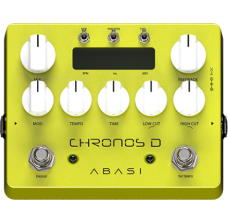
Chronos Delay
Try it in Archetype: Abasi
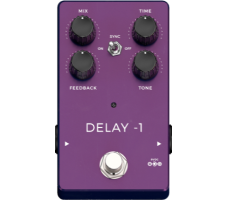
Archetype: Nolly: Delay 1
Try it in Archetype: Nolly

Archetype: Nolly: Delay 2
Try it in Archetype: Nolly
Reverb
Reverb pedals create echoes that simulate the sound of playing in a large space, such as a concert hall, cathedral, or studio room. The effect is created by producing a series of echoes that vary in time, frequency, and amplitude, creating a sense of spatial depth and fullness to your sound. Reverb pedals are used to add ambiance and dimension to your guitar tone.
In addition to emulating natural room ambience, reverbs can be used to create a variety of unique and creative sounds such as dreamy soundscapes, or eerie and haunting sound effects.

Reverb pedals in Neural DSP plugins
Try all of these pedals with a 14-day free trial of any plugin.
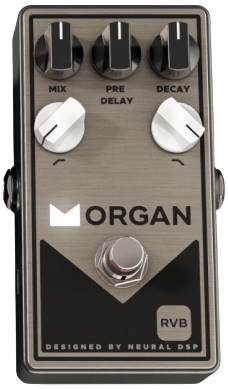
Morgan Amps Suite: RVB
Try it in Morgan Amps Suite
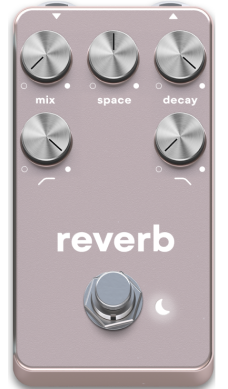
Archetype: Plini X: Reverb
Try it in Archetype: Plini X
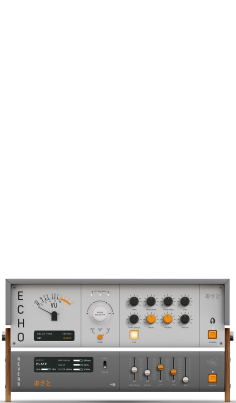
Archetype: Mateus Asato: Reverb
Try it in Archetype: Mateus Asato

Archetype: Tom Morello: Reverb
Try it in Archetype: Tom Morello

Mesa Boogie Mark IIC+ Suite: Reverb
Try it in Mesa Boogie Mark IIC+ Suite

Aeons Reverb
Try it in Archetype: Rabea

Tone King Imperial MKII: Reverb
Try it in Tone King Imperial MKII

Archetype: Petrucci: Reverb
Try it in Archetype: Petrucci
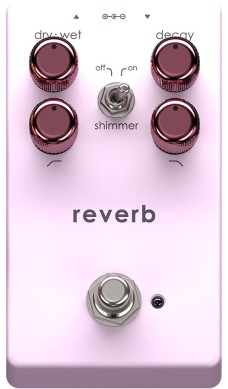
Archetype: Tim Henson: Reverb
Try it in Archetype: Tim Henson
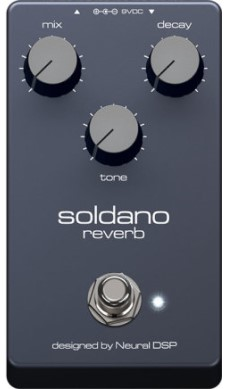
Soldano SLO-100: Reverb
Try it in Soldano SLO-100

REV
Try it in Archetype: Gojira X

The Wash
Try it in Archetype: Cory Wong
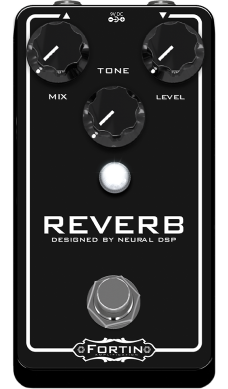
Fortin Reverb
Try it in Fortin Cali Suite

Chronos Reverb
Try it in Archetype: Abasi

Archetype: Nolly: Reverb
Try it in Archetype: Nolly

4. Pitch
Pitch effects manipulate the pitch of a guitar's signal, allowing you to shift the pitch up or down by a certain interval, or create harmonies by adding additional notes to the signal. These effects are often used to create interesting and unique sounds. For example, you may use a pitch shifter to create a harmonized lead guitar part that mimics the sound of a second guitar playing in unison. Pitch effects can also be used to create unusual sounds, such as "glitchy" pitch shifts that create a disorienting effect or pitch bends that simulate use of a whammy bar.
You can also use pitch effects to make your guitar sound like it is in a different tuning. For example, you can use a pitch shifter to play in standard D tuning without actually changing the tuning of the guitar from E standard, or make a 6-string guitar sound like a 7-string.
Octave pedals
Octave pedals shift the pitch of the guitar signal either up or down by one or more octaves. They work by taking the input signal, duplicating it, and then transposing the duplicate signal up or down the desired number of octaves. The processed signal is then mixed with the original one, resulting in a blended tone with a unique sound.
They are often used to create a thicker, more robust guitar tone by adding an octave below the original signal, filling out the low end of the mix and creating a more powerful sound. Octave pedals are also used to create unique and experimental sounds, such as high-pitched solo tones, interesting harmonies or even making a regular electric guitar sound like a bass.

Octave pedals in Neural DSP plugins
Try all of these pedals with a 14-day free trial of any plugin.
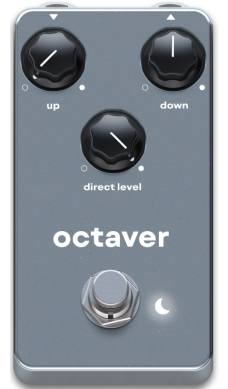
Archetype: Plini X: Octaver
Try it in Archetype: Plini X
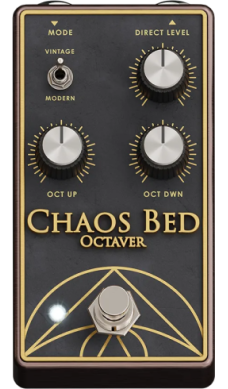
Chaos Bed Octaver
Try it in Archetype: Rabea
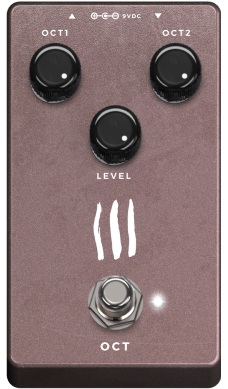
OCT
Try it in Archetype: Gojira X
Whammy pedals
A whammy pedal allows you to bend the pitch of notes in a variety of ways, creating a distinctive and expressive sound. Whammy pedals work by manipulating the guitar's signal, allowing you to create pitch bends, harmonies, and other pitch-shifting effects in real time. This can be done by raising or lowering the pitch of the guitar's signal, often by a specific interval or range of intervals.
Along with various controls for adjusting the amount and type of pitch shifting, these pedals usually feature an expression pedal that is used to control the effect. In the case of digital plugin effects, you can easily connect a MIDI expression pedal to your computer, and use it to create the same functionality as a physical whammy pedal.
You can use whammy pedals to create a wide range of sounds, from subtle pitch bends to extreme and experimental effects. Whammy effects are often used in solos and other lead guitar parts to add expression and character to the performance.

Whammy pedals in Neural DSP plugins
Try all of these pedals with a 14-day free trial of any plugin.
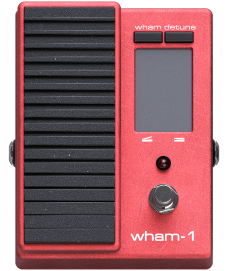
Wham-1
Try it in Archetype: Tom Morello

Dive Bomb
Try it in Archetype: Tom Morello
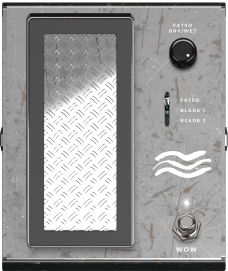
WOW
Try it in Archetype: Gojira X
Other pitch effects
In addition to the effects described above, our guitar plugins have some rather unique pitch manipulation effects. For example, Archetype: Tim Henson has the “Multivoicer” effect that allows you to add 4 pitch shifted voices on top of your signal. The voicing library in the effect gives you absolute control over the root note, modes, and chords for harmonizing as well as arpeggiating, allowing you to create complex, layered sounds.
Archetype: Gojira X, Morgan Amps Suite, Archetype: Plini X, Archetype: Mateus Asato, Archetype: Tom Morello, Mesa Boogie Mark IIC+ Suite, Archetype: Rabea, and Archetype: Petrucci have the “Transpose” feature allowing you to shift the pitch of your guitar signal up or down to simulate alternate tunings or make your 6-string guitar sound like a 7-string.

Other pitch effects in Neural DSP plugins
Try all of these pedals with a 14-day free trial of any plugin.

Multivoicer
Try it in Archetype: Tim Henson

5. Frequency
Frequency-based guitar effects alter the frequency content of your guitar's signal, changing the overall tonal characteristics of the sound. These effects are used to shape the sound in various ways, from boosting or cutting certain frequencies to creating complex filter sweeps and modulations.
Equalizer (EQ)
Equalizer (EQ) guitar pedals allow you to shape your guitar tone by altering the frequency content of your signal. An EQ is essentially a filter that lets you selectively boost or cut certain frequencies in your guitar signal. EQ pedals typically feature a series of sliders or knobs that allow you to adjust the level of specific frequency bands. For example, you might have controls for bass, midrange, and treble frequencies, along with additional controls for shaping the overall tone.
By boosting or filtering out certain frequency ranges, you are able to shape the texture of your tone. By cutting out high frequencies, you get a warmer and smoother sound, while filtering out low frequencies will result in a brighter, more focused sound.
All Neural DSP guitar plugins include either a 9-band graphic equalizer or a 4-band semi-parametric equalizer.
Related articles:

Equalizer (EQ) pedals in Neural DSP plugins
Try all of these pedals with a 14-day free trial of any plugin.

Archetype: Tom Morello: 7-band equalizer
Try it in Archetype: Tom Morello

4-band semi-parametric equalizer
Try it in Archetype: Rabea & Archetype: Petrucci

9-band graphic equalizer
Try it in Archetype: Gojira X, Morgan Amps Suite, Archetype: Plini X, Archetype: Mateus Asato, Archetype: Tom Morello, Mesa Boogie Mark IIC+ Suite, Tone King Imperial MKII, Archetype: Tim Henson, Soldano SLO-100, Archetype: Cory Wong, Fortin Cali Suite, Omega Ampworks Granophyre, Archetype: Abasi,& Archetype: Nolly
Wah
A wah pedal alters the tone of the guitar signal to create a distinctive "wah" sound. The effect is achieved by sweeping a frequency range up and down using an expression pedal (read our guide on connecting a MIDI expression pedal to your computer). When the pedal is rocked back and forth, the center frequency of a bandpass filter changes, creating the classic "wah" effect. As the pedal is rocked forward, higher frequencies are emphasized, and as the pedal is rocked back, lower frequencies are emphasized.
An auto-wah doesn't require a pedal to control the effect. Instead, the sweep of the filter is triggered automatically by the volume of the guitar signal. As the volume of the signal increases or decreases, the filter sweep moves up or down, producing a similar effect to a manually controlled wah pedal.
Wah pedals are used to create expressive, vocal-like tones in guitar solos and other lead parts. They can also be used for rhythm playing, particularly in funk music, where the rhythmic "wah" sound is used as a percussive element. The wah pedal is one of the most iconic effects in the history of rock music and has been used by countless guitarists to create some of the most memorable guitar sounds in music history.

Wah pedals in Neural DSP plugins
Try all of these pedals with a 14-day free trial of any plugin.

Archetype: Tom Morello: Wah
Try it in Archetype: Tom Morello

Tone King Imperial MKII: Wah and auto-wah
Try it in Tone King Imperial MKII

Archetype: Petrucci: Wah
Try it in Archetype: Petrucci
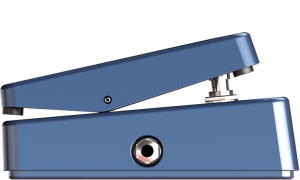
Archetype: Cory Wong: Wah and auto-wah
Try it in Archetype: Cory Wong
Envelope filter
An envelope filter is essentially a dynamic EQ that uses the volume of your guitar's signal to control a filter. The filter alters your tone by enhancing or cutting off specific frequencies. Envelope filters are especially popular in funk music, as the filtering effect creates a percussive quality to the guitar playing.

Envelope filter pedals in Neural DSP plugins
Try all of these pedals with a 14-day free trial of any plugin.

The Postal Service
Try it in Archetype: Cory Wong
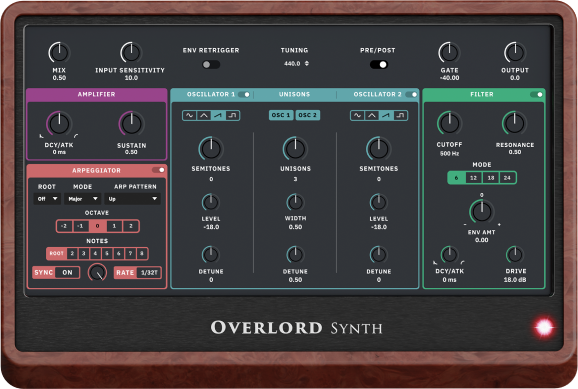
6. Guitar Synthesizer
Guitar synthesizers allow you to create synthesized sounds using your guitar. Typically, guitar synth pedals detect the pitch of the guitar signal and use it to trigger an oscillator. The oscillator then generates a sound wave that is tuned to the pitch of the guitar signal. The sound wave can be manipulated to create a wide range of sounds, from classic synthesizer tones to futuristic soundscapes. Guitar synthesizers can also be used to emulate the sound of other instruments, such as a keyboard or a brass section.
Overlord Synth
The Overlord Synth in Archetype: Rabea is a true achievement in the world of guitar synthesis. Unlike traditional guitar synth pedals, the Overlord Synth is a real synthesizer that uses a guitar to trigger its two oscillators and ADSR (attack, decay, sustain, and release) envelope.
The ADSR envelope refers to how each part of the sound changes over time. When you first pluck the string, the sound gets louder (attack), then gets quieter as you hold the note (decay), stays at a constant volume while you're holding the note (sustain), and finally fades out when the note stops ringing (release). This means that the synthesizer follows the same pattern as the original guitar sound, making this a truly unique effect that gives you the ability to organically play a full-featured synth with any standard guitar. The result is a transformative and highly flexible experience that blurs the lines between guitar and synth in a way that has never been achieved before.
Try the Overlord Synth in Archetype: Rabea and add a whole new dimension to your playing.
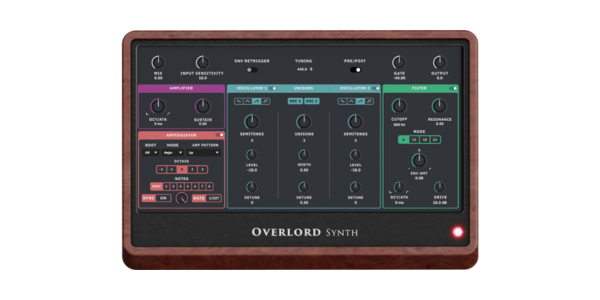

7. Other effects
Doubler
The doubler effect found in Archetype: Plini X, Archetype: Mateus Asato, Archetype: Tom Morello, Mesa Boogie Mark IIC+ Suite, Archetype: Rabea and Archetype: Petrucci projects your signal to a stereo field with an adjustable spread control. This adds richness and depth to your tone and makes it sound like a double-tracked recording.


Volume pedals
Volume guitar pedals are used to control the output level of your guitar signal, allowing you to increase or decrease the volume of your sound. Volume pedals can be used for a variety of purposes, such as creating swells and fades or controlling the volume of different guitar parts during a performance.
Archetype: Petrucci features a MIDI-controllable volume pedal (read our guide on connecting a MIDI expression pedal to your computer).
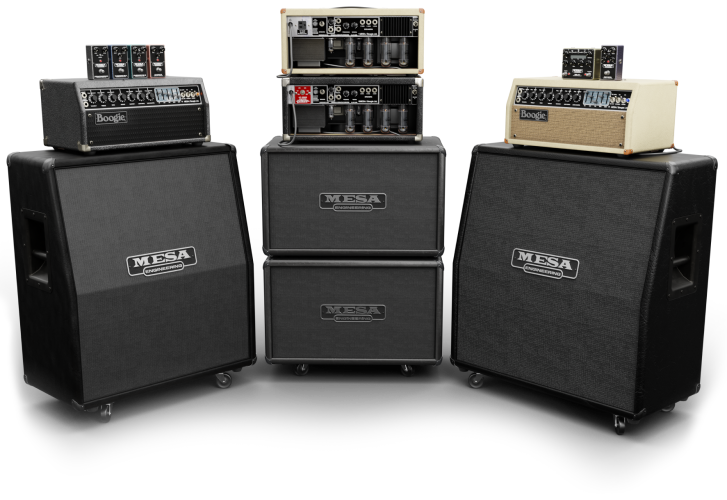
All our guitar plugins have a 14-day free trial
Download a free trial today and try out our collection of high-quality guitar effects plugins.
